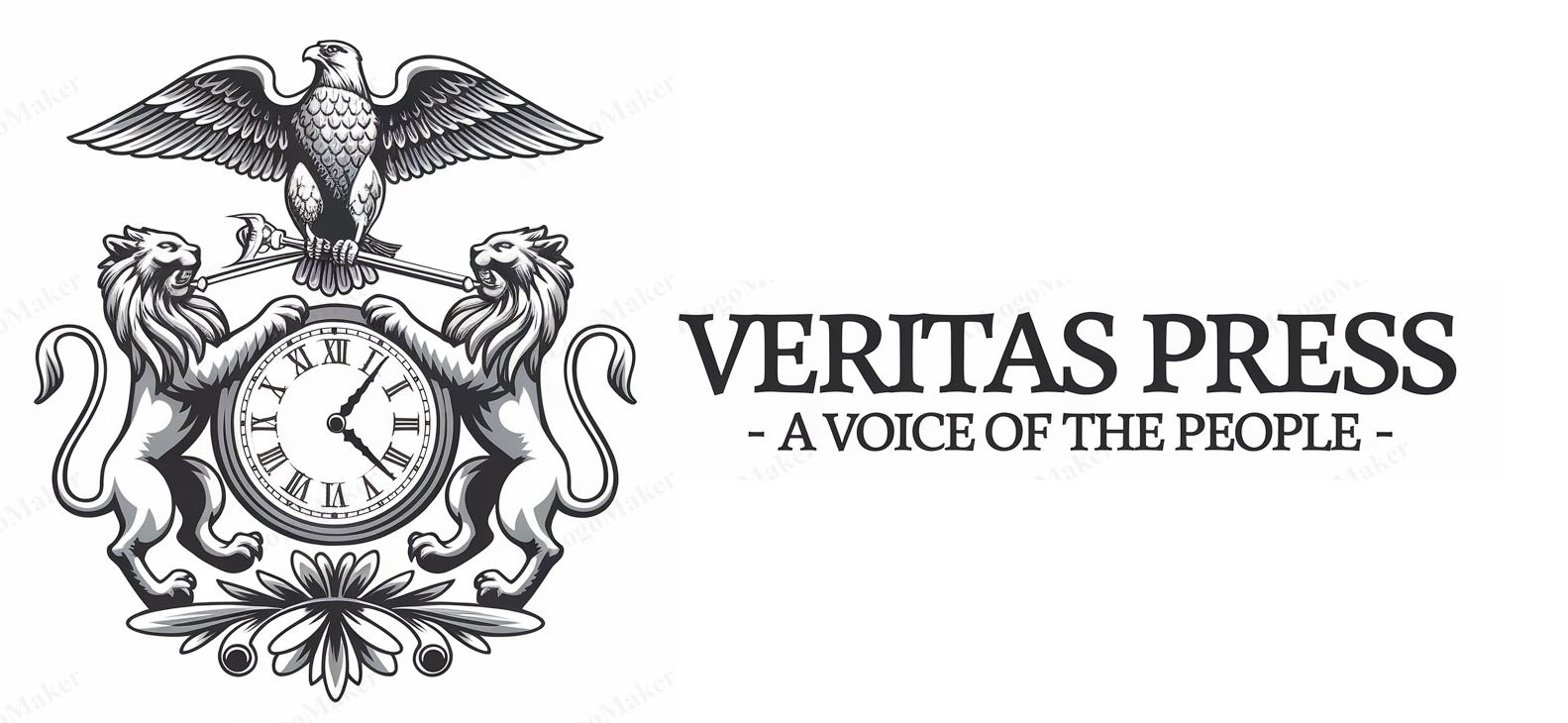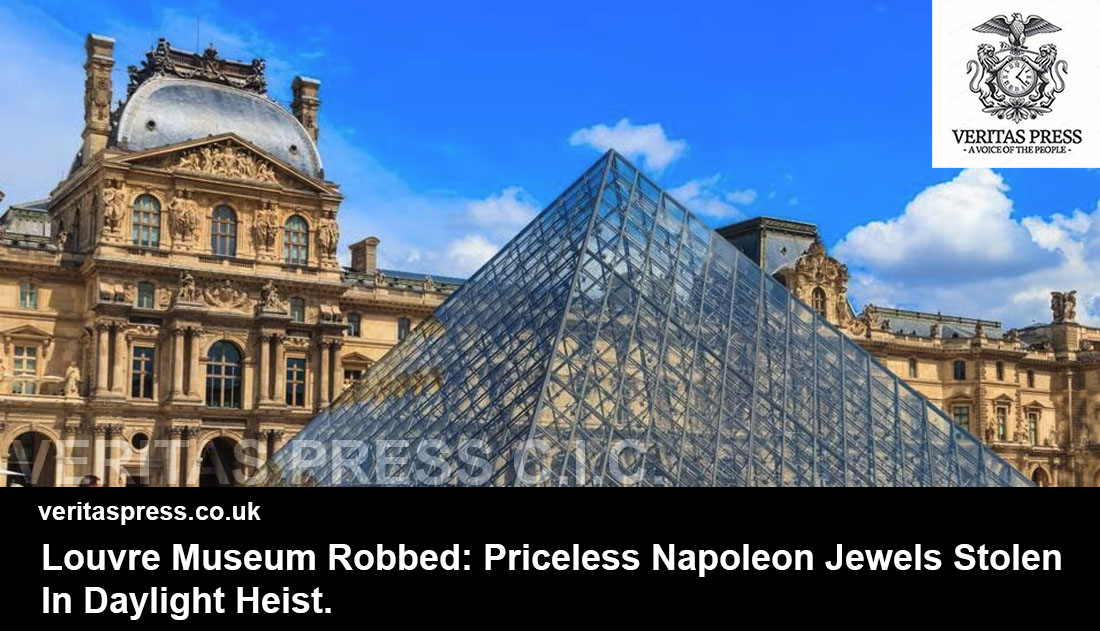Press Release: Veritas Press C.I.C.
Author: Kamran Faqir
Article Date Published: 19 Oct 2025 at 12:26 GMT
Category: Europe | France | Louvre Museum Robbed
Source(s): Veritas Press C.I.C. | Multi News Agencies

Business Ads


FRANCE-PARIS – On Sunday, October 19, 2025, the Louvre Museum in Paris was abruptly closed following a daring daylight robbery in which thieves stole nine pieces of priceless jewellery from the Napoleonic collection. The heist, which lasted just seven minutes, has left the art world in shock and raised serious questions about the security of cultural institutions.
A Coordinated And Swift Operation:
According to French Interior Minister Laurent Nuñez, the thieves used a basket lift to access a window on the museum’s façade facing the Seine River. Once inside, they employed small chainsaws to cut through glass panes and display cases in the Galerie d’Apollon, home to part of the French Crown Jewels. The stolen items include a necklace, brooch, and crown, believed to have belonged to Napoleon and Empress Josephine. Notably, the largest diamond in the collection, weighing over 140 carats, was left untouched.
The thieves reportedly escaped on motorbikes, and one piece of jewellery, believed to be Empress Eugénie’s crown, was later found damaged outside the museum.
Immediate Response And Investigation:
French Culture Minister Rachida Dati confirmed the incident and stated that no injuries were reported. She was present at the scene alongside police and museum staff as investigations commenced. The Louvre announced it would remain closed for the day due to “exceptional reasons,” without providing further details.
The Parisian Public Prosecutor’s Office has opened an investigation into suspected “organised theft and criminal conspiracy to commit a crime.” The investigation is being supported by an investigative service that combats illegal trafficking of cultural goods.
Historical Context And Security Concerns:
This robbery marks a rare theft at the heavily secured Louvre, the world’s most-visited museum. The last known robbery occurred in May 1988, when a 19th-century landscape painting by Jean-Baptiste-Camille Corot was cut from its frame and stolen during opening hours; it remains missing. The museum’s most famous heist was the 1911 theft of the Mona Lisa, recovered two years later.
The incident has highlighted concerns about the ageing infrastructure of the Louvre. Earlier this year, French President Emmanuel Macron announced extensive renovations after the museum’s director, Laurence des Cars, described the current visitor experience as a “physical ordeal” due to poor insulation, noise, water leaks, and inadequate temperature controls that also risk damaging artwork.
Broader Implications:
The theft has sparked discussions about the security of cultural institutions worldwide. With the increasing value of art and historical artefacts, museums are becoming more attractive targets for criminals. The use of advanced tools like chainsaws and the swift execution of the heist suggest a high level of planning and expertise.
Authorities are urging museums to reassess their security measures and consider implementing more advanced technologies to protect their collections. The Louvre’s experience serves as a stark reminder of the vulnerabilities that even the most renowned institutions face in safeguarding their treasures.

























